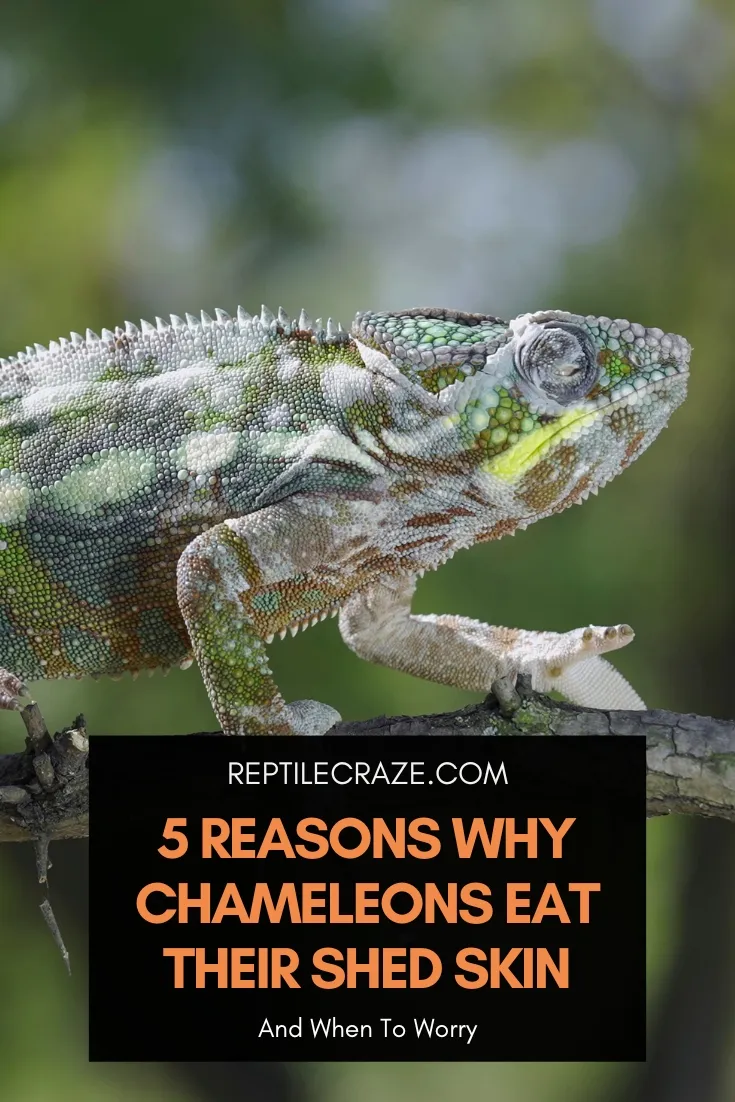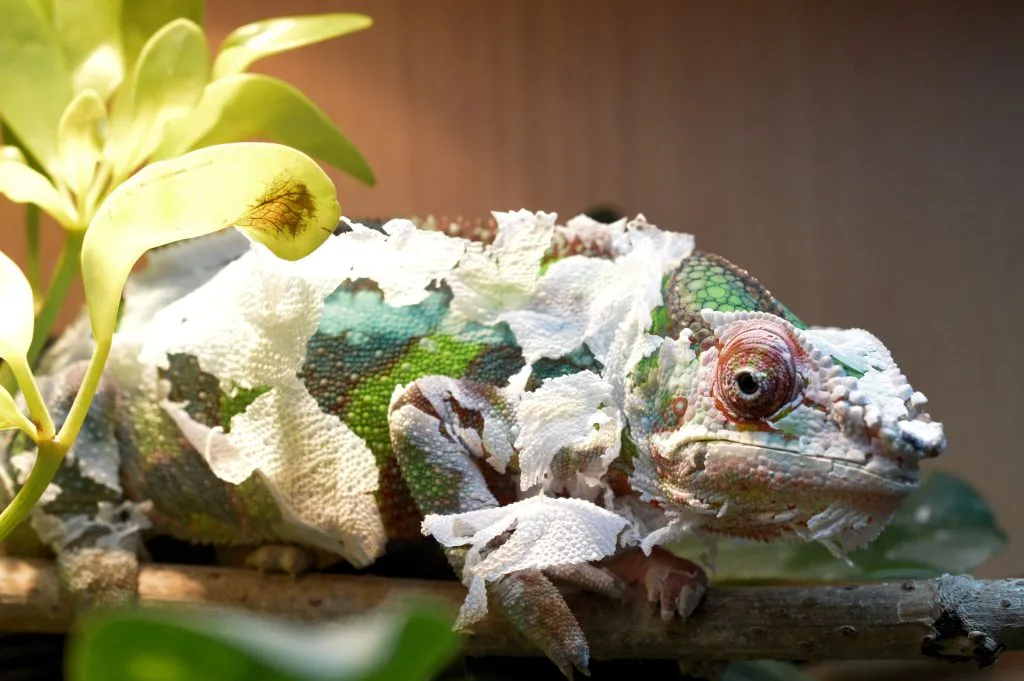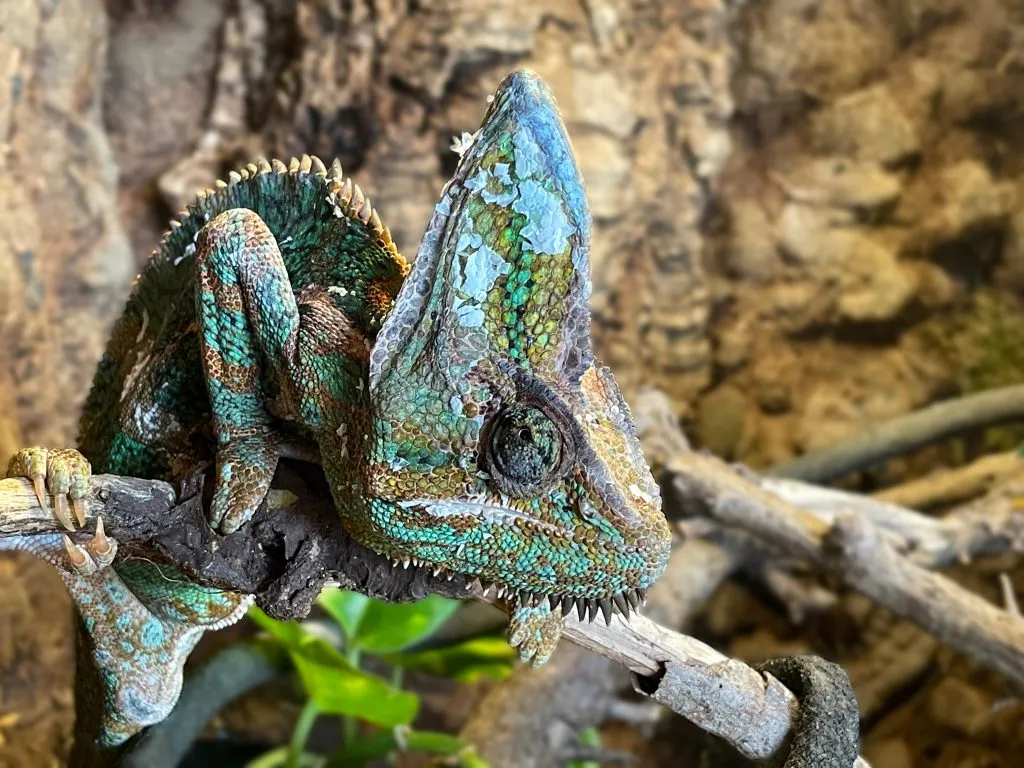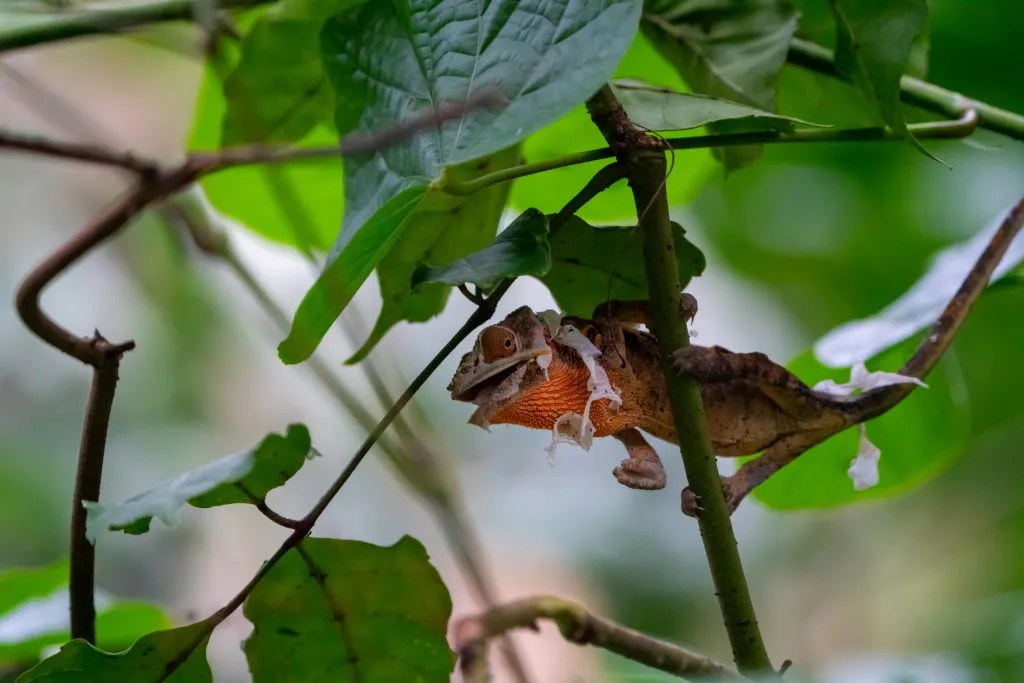
Chameleons are a unique species with some interesting behaviors that can seem odd to us humans. Eating their own shed skin is one of them. But why do they do it?
Chameleons eat their shed skin for several beneficial reasons. Eating shed skin can speed up the shedding process, provide needed nutrition, aid in capturing prey, and help them evade predators. A chameleon might also eat its shed skin because of hunger.
In this article, we explore these reasons in detail so you can understand what’s going on when your chameleon starts snacking on its shed skin.
Table of Contents
Why Do Chameleons Eat Their Shed Skin?
Here’s why your chameleon might be eating its shed skin:
1. To Speed Up The Shedding Process
Shedding usually takes 2 to 3 days for a healthy adult chameleon. The old skin typically peels away in large sections but it doesn’t always fall off instantly.
Some bits of skin usually remain attached, which can cause discomfort, so a chameleon might just eat them off.
A chameleon might also eat its skin when shedding if it’s feeling stressed or impatient. Eating their shed skin removes any irritating sections and accelerates the whole shedding process.
This can allow the chameleon to get back to its normal day-to-day activities.
2. To Recover Nutrients

Another reason why your chameleon might be eating its shed skin is that it’s recovering nutrients. Shed skin still contains some of the essential vitamins and minerals that the chameleon needs to stay healthy.
So, although it seems a bit gross, it’s actually a pretty efficient way for them to recover nutrients that would otherwise be lost.
In the wild, if
Is your chameleon not eating properly? Our article on that will help you!
3. To Help Capture Prey
Chameleons can use their old skin to create a type of bait that helps them capture prey more effectively. They do this by mixing the old skin with their saliva.
Chameleon saliva is 400 times thicker than our saliva and it’s incredibly sticky to make their prey stick to their lengthy tongue.
They roll their discarded skin into a sticky ball and keep it tucked away in their mouths. As you can imagine, this rots and becomes quite smelly.
The strong scent that this lizard-made bait produces attracts many of the insects chameleon prey on. Creating this bait can reduce the time it takes to capture prey and this helps them stay well-fed.
4. To Evade Predators

It’s also possible that your chameleon is eating its shed skin to avoid becoming prey! Chameleons are cautious creatures that have adapted clever ways to keep themselves safe.
Leaving a trail of shed skin behind them in the wild is like leaving a trail of breadcrumbs — it can help predators track them down. By eating their shed skin, chameleons leave no evidence of themselves.
Consuming this evidence helps the chameleon keep itself hidden and reduces the chance of a predator finding it.
It may also help regulate their stress levels as being in the presence of predators is extremely stressful for chameleons.
Wanna know why chameleons rock back and forth when they walk? We explain why here!
5. To Eliminate Hunger

It’s also possible that your chameleon is simply hungry! Chameleons typically stop eating in the lead-up to shedding and not eating during a shedding is also normal for them.
But being opportunistic eaters, they might tuck into a bit of shed skin.
As long as the skin they eat has been recently shed, there is no danger in them consuming it.
However, old skin that has been left lying around can be a breeding ground for bacteria, so you definitely don’t want your chameleon to be eating that.
Once the shedding’s complete, your chameleon should return to its normal eating habits.
- Enchi Ball Python: A Unique and Stunning Morph of Python regius - March 27, 2025
- Emerald Tree Monitor: The Enigmatic Green Guardian of the Rainforest - March 26, 2025
- The Egyptian Cobra (Naja haje): A Fascinating Serpent - March 25, 2025
